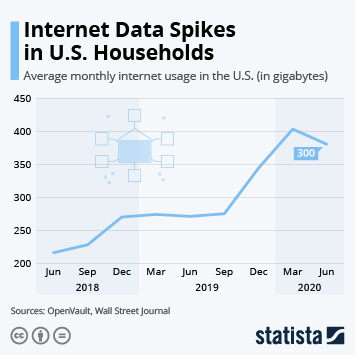The White House on Monday announced a high-speed internet initiative worth more than $42 billion that aims to bring fast connectivity to every American household by 2030. Looking at OECD data, the U.S. has already come a long way in providing fast internet – defined as connections with download speeds of at least 25 megabits per second. As of Q2 2022, around 88 percent of U.S. broadband connections fell into this category.
Where the U.S. is potentially lagging somewhat behind is the availability of broadband connections in general. The OECD report counted 38 broadband connections per 100 U.S. inhabitants in 2022, compared to 41-47 in selected European countries. This could be due to the lack of availability of broadband, defined as any DSL, cable, fiber or fixed wireless connection with a download speed of at least 0.256 megabits per second, or due to a lack of uptake.
The OECD country leading the internet speed and uptake ranking is South Korea with 45 broadband lines per 100 inhabitants, of which 99 percent were fast broadband. Similar uptake with more 90 percent high-speed connections can be found in Belgium, Portugal, Switzerland, the Netherlands and Sweden. No data was available for Japan. Similar to the U.S., countries achieving good internet speeds but somewhat lower broadband use were Iceland, Hungary, Chile, Australia and New Zealand, showing that large countries and/or those with big rural areas are having a harder time to achieve universal access to fast broadband. This could potentially be the bigger challenge to Biden’s plan.
While Latin American countries in the ranking, like Colombia, could beat some European peers for speed, availability and uptake was a lot lower in these nations. The picture looked similar in high-speed internet nation Israel. Many of the countries ranking well for speedy internet also did well on a separate ranking: the share of fiber connections, which can reach speeds around 1 gigabits per second. South Korea also leads this ranking, while Belgium seems to be content with its almost universal access to fast broadband outside of fiber optics, coming in second-to-last ahead of Greece for fiber uptake.





















